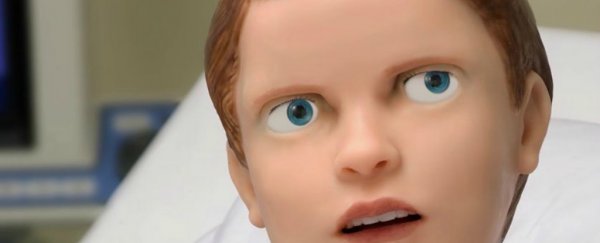Medical training exercises are getting more and more realistic. Recently, companies have developed robots that medical students can practise on.
The idea is that these pretend people can lead us a little way into the uncanny valley, so we have to deal with the emotional response as well as the methodology behind a procedure.
One of the latest medical robots is called HAL. It takes the form of a five-year-old boy which can respond to certain questions, follow a finger with its eyes, bleed, and convulse.
It even has a pulse.
HAL was built by Gaumard Scientific, a company that produced the first synthetic human skeleton for medical schools.
The company's technology has come a long way since then, having developed a synthetic boy who can simulate many medical problems, cry tears, and shout for its mother.
Using HAL is supposed to help students retain their knowledge better, because it is as close to treating a real person without actually using a human volunteer.
HAL's other functions include going into cardiac arrest, anaphylactic shock, and the ability to have its blood sugar, blood oxygen level, and carbon dioxide levels measured.
Also, its pupils dilate when a light is shined into its eyes.
In a promotional video, a doctor asks HAL about how much its head hurts, and it responds "an eight".
To prepare for the really bad injuries and problems, HAL can be hooked up to real hospital machines and shocked with a defibrillator.
When it's awake it can be set to several different emotional states, including lethargic, angry, amazed, quizzical, and anxious.
The idea is to make HAL just realistic enough to help students with their studies, but not so realistic that it's too traumatic to deal with when they have to slit its throat to insert a trachael tube.
HAL is one of a few medical robots currently in use. On the Gaumard website there is also a premature baby simulator, and a scarily realistic robot that gives birth.
These pretend people are very different from the lifeless dummies medical professionals have used for decades.
"I've seen several nurses be like, 'Whoa it moves!'" Marc Berg, the medical director at the Revive Initiative for Resuscitation Excellence at Stanford, told Wired in a chilling article.
"I think that's kind of similar to the idea that if you've driven a car for 20 years and then you got a brand new car, you're kind of amazed initially."
Watch the video explaining all of HAL's functions here:
This article was originally published by Business Insider.
More from Business Insider:
